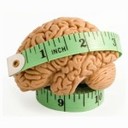
Dangerous Eating Behaviors May Originate Physiology of the Brain
There’s no doubt that western cultures emphasize and value thin body types for women. But to what extent are cultural values responsible for eating disorders? The jury is still out on that, but three studies reveal interesting brain deviations in women with anorexia.
First Study: Anorexics Have Larger Brain Regions
It turns out that anorexics have more gray matter in regions of the brain responsible for taste, satiety and body image.
The research, led by Guido Frank, MD, assistant professor of psychiatry and neuroscience, complements other research on adults that showed the same results.
While Dr. Frank is not discounting cultural influences that encourage young women to drastically reduce calories, he conjectures: “Similar results in children with anorexia nervosa and in adults who had recovered from the disease, raise the possibility that insula and orbitofrontal cortex brain size could predispose a person to develop eating disorders.”

The anorexic brain also appears to have less capacity for flexible behavior, according to research from Germany’s Heidelberg University. 30 young women were tested via MRI while performing a geometric shape-matching test. When the principle for matching the patterns changed after just one test run, the anorexic participants were not able to perform as well as healthy participants. It appeared that the neural pathway that initiates and controls actions under rapidly changing external demands was less active in the anorexic subjects.
“In this study, we confirmed that anorexic patients cling to familiar behavioral responses more frequently than healthy subjects, thus suppressing alternative behavior,” explained Dr. Hans-Christoph Friederich, head of the working group for eating disorders.

Researchers at Ruhr-University Bochum in Germany recorded brain activity in 25 subjects in MRI scanners. They were testing how anorexic participants considered their own body shape, compared to how controls perceived the body shape of the anorexics. They also compared how healthy participants viewed their body shape, against how the controls viewed the body shape of the healthy participants.
Interestingly, the healthy participants all viewed their own body shape as thinner than did the controls. And, as would be expected, the anorexic participants viewed their body shape as heavier than did the controls.
Upon analyzing the brain scans, researchers discovered that the connectivity between two areas of the brain known to be critical for body perception was weak in the anorexic participants. And the weaker it was, the more distorted was their perception of their body.
